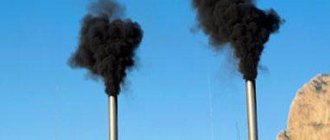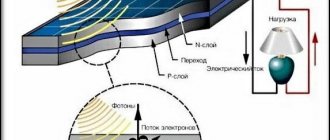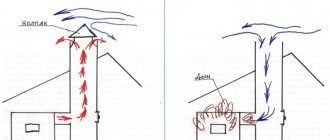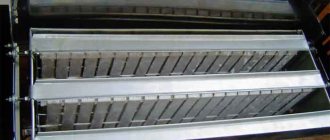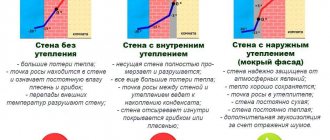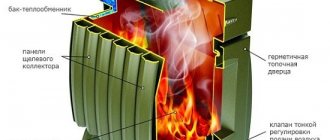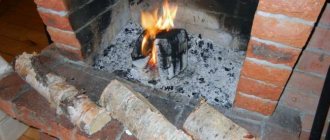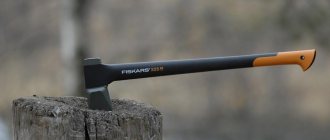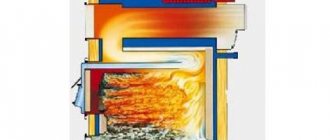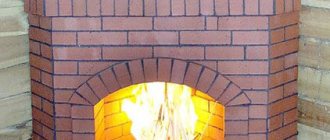Flame characteristics and properties
The flame is a hot gaseous medium and spreads from bottom to top. This happens because warm air becomes less dense. When heated, it rushes upward and carries the fire with it. Therefore, lighting the fire (stove) starts from the bottom. Because a torch set on fire at the very top will not spread the fire down, and it will die out.
Flame behaves completely differently in zero gravity. Due to the lack of gravity, it spreads in all directions at once and therefore has the shape of a ball. Moreover, it glows with a bright blue color, but only as long as there is oxygen nearby. As soon as the latter burns out, the fire goes into a “cold” stage, invisible to the eye. And it lasts for several minutes. And if oxygen is supplied to the invisible source, the bright combustion resumes.
On the ground, the height of the flame will depend on how hot the flame temperature of a wood fire is. This is directly related to the intensity of combustion. And the phases stretch: from slow smoldering to explosion. But the greater the strength of the fire, the faster the fire burns out.
High flame of a fire Source goodfon.ru
The flame can change its color, and this is also affected by power. During the combustion process, the fire passes from red to violet spectra and back. But the palette also depends on the impurities in the fuel. If you throw ordinary table salt into a burning hearth, the flame will turn yellow. Sodium is to blame. And boric acid causes a turquoise tint.
Therefore, when firewood burns bright orange, it means that it contains a lot of sodium salts. And the blue color of a fire comes from incomplete combustion of fuel. This releases carbon monoxide. So it gives a similar spectrum.
But it happens that the flame is almost impossible to see. Colorlessness of fire occurs when fuel is completely burned. When it emits only water vapor and carbon dioxide. And these substances are invisible even when heated.
Any combustion is accompanied by smoke, as a fine aerosol is formed. Its particles are so small that they do not have time to settle to the ground and are carried away by heated air masses. And the amount of secretions depends on oxygen. With a very high concentration, the fire burns almost smokelessly. And if it barely smolders, spreading clouds of smog, then this indicates its shortage.
Extinguishing fire Source pixabay.com
The color of the emissions is directly related to the water content in the fuel. If you put wet firewood or freshly cut grass into the kindling, thick and white smoke will come out of the chimney. But when it turns black, this indicates a large amount of soot in the fuel. A striking example is the dense black smog caused by a burning car tire.
Alternatives to a campfire
Of course, it is impossible to replace a fire with one thing that would fully perform its functions without requiring fuel. However, this does not mean at all that it is impossible to do without a fire: a combination of different equipment, techniques and materials can completely replace a fire, in some cases even surpassing it in efficiency.
For example, burners can be used for cooking, which is used by tourists going on mountain hikes. Burners, of course, have their drawbacks, but compared to a fire, they do not smoke, are compact and safer in terms of fire.
In the region of the tropics and the equator, food can be cooked on sun-heated stones or sand, or you can simply take food that does not require heat treatment on a hike.
We have already spent several trips on “raw” food without any fires or burners. This practice has shown that this option is quite acceptable, especially for hiking in the warm season.
For heating in the absence of a fire, you can use special heating pads in combination with warm clothes and a sleeping bag, and in the most extreme cases, in the absence of any equipment, a pile of rotting grass: when rotting, heat is released, and the temperature of such a pile can even be higher than the temperature of the human body.
For drying wet things, ropes stretched between trees, as well as the branches of the trees and bushes themselves, on which it is convenient to weigh everything that needs to be dried, have proven themselves to be effective. In warm, dry weather, you can dry things on the go by hooking them onto your backpack. As a last resort, clothes can be dried directly on the body, but this is only permissible if the person is not in danger of hypothermia.
Lanterns are best for lighting. Compared to a fire, they are easier to carry, you can adjust the brightness, turn them on and off when needed, and use them in a tent. Flashlights are safer and easier to use.
But if you don’t have to dive underground, travel to a cave, or travel at night through a wooded area, in the absence of a fire and a flashlight, you can get by with natural lighting created by the stars and the Moon.
Even on a moonless but clear night, the light of the stars is enough to move through open areas, as evidenced by our hike along the Oleshkovsky Sands, in which instead of a compass and GPS navigator we walked at night, guided by the stars.
Special clothing and repellents will save you from blood-sucking insects. From my experience, I can say that these means of protection are significantly more effective than smoke from a fire; in addition, they are less harmful to the human body and act wherever a person goes.
If you treat your skin with a good repellent as shown in the photo, mosquitoes will not bite for 2-3 hours:
As you can see, despite the versatility of a fire as a means of survival, in some situations you can still do without it, without being particularly strained by the inconveniences that arise.
For example, on a summer weekend hike you can completely do without fires, saving time on collecting firewood, preparing a fire pit, lighting a fire, cooking food and extinguishing firebrands, as well as nerves and financial resources from a possible visit from foresters. At the same time, in an emergency situation that occurs in a winter forest in the absence of a sleeping bag, it is unlikely that it will be possible to do without a fire: heating pads sold in specialized stores in this case will be ineffective, even if they end up in the victim’s pocket, and only a well-organized fire in this case will give hope for salvation.
Author: Maxim Chechetov
Wood burning process
In order to find out at what temperature a tree burns, you need to consider the entire process in detail. From laying firewood in the hearth to completely extinguishing the fire in the stove. And the whole operation takes place in stages.
Warming up
For a section of wood to ignite, it must be heated. At temperatures from 120 to 150 degrees Celsius, charring of the surface begins. In this case, a substance appears that is already capable of ignition. It's called coal.
Increasing the heating to 250-350 °C promotes the formation of pyrolysis. These are gaseous components that arise during thermal decomposition. At the same time, the upper layers of coal in the wood are already beginning to smolder. The process occurs without fire, but with the release of smoke.
Starting a fire Source ohniska.sk
See also: Catalog of companies that specialize in the design and installation of fireplaces and stoves of any complexity
Pyrolysis fire
The increased thermal decomposition that occurs with further heating causes the released gas to ignite. In this case, the outbreak covers an increasingly larger area in the form of a chain reaction. A steady flame appears, colored bright yellow-orange.
Ignition
But wood lights up when the heating of the surface reaches a temperature of 450-620 °C. More precise numbers will depend on the type of tree. But in general, a much larger number of factors influence the thermochemical reaction (ignition).
Achieving the required temperature depends on:
- shape and volumetric weight of a piece of wood;
- the amount of moisture in it;
- how the log is positioned in the air flow;
- the latter's traction force;
- density of the fuel material.
Alder, which has a porous structure, is much easier to light than strong oak. And a round log ignites worse than firewood with edges. The same applies to the massiveness of the material. Large logs are very difficult to light. Planed texture also does not light well. And the slowness of the process with wet wood is explained by the fact that a lot of energy is spent on evaporating water.
Start of fire Source imgur.com
Combustion
Provided that there is a sufficient supply of oxygen and sufficient thermal energy to warm up neighboring areas, the process enters a stable phase. The entire volume of fuel is already used in it, and the fire is helped by the combustion of coal (smoldering) and explosions of pyrolysis emissions.
Other gases are released more slowly and practically do not participate in the combustion process. As they cool, they condense and become visible (white). And when coal smolders, air penetrates more and more into the middle of the wood and the scope of combustion increases.
Attenuation
The process can continue indefinitely if all conditions are met:
- There is still unburnt fuel available.
- Oxygen is supplied in sufficient quantities.
- The fire temperature level does not drop critically.
As soon as at least one of the conditions is violated, the fire goes out.
What can temperature depend on?
But the density (species) of wood is not the only point that determines at what degrees the firewood will burn. Let's consider two main factors that significantly influence the increase in heat transfer.
Humidity
A freshly cut tree has an average humidity level of 55%. If such a trunk is immediately chopped into firewood and immediately thrown into the stove, then most of the released thermal energy will be spent on the evaporation of moisture. Therefore, the heat transfer of such fuel is significantly underestimated and the combustion temperature of wood in the stove will reach maximum values too late.
If there is no other fuel available, then to heat the room in winter you will have to spend twice as much of this kind of firewood. But overconsumption of freshly cut fuel is not the only loss on the farm. The use of raw material increases the soot emission during combustion. This means you will have to service the chimney more often, and possibly in the cold. Otherwise, heat production in the furnace will drop to a minimum.
Soot emission from a chimney Source agronom.guru
Proper lighting of a fire
In order for a fire to flare up quickly, even with one match, and not go out to everyone’s disappointment, it must be lit correctly.
To do this, you need to adhere to the following algorithm:
- The tinder is ignited, and from it - kindling. The stage of igniting the tinder can be bypassed if it is possible to get an open fire from which to ignite the kindling directly.
- The thinnest brushwood or wood chips are placed on the burning kindling. The result is a small, unstable fire that can easily go out, so you need to approach this stage with all responsibility.
- As the thin brushwood burns, thicker brushwood is added to the fire until coals as thick as an index finger are formed. Only after this can the fire be considered stable, since it will no longer be blown away by the wind, and its extinguished coals can be fanned.
When thick logs flare up in a huge fire, you can throw even the dampest firewood into it: it will burn without risking the fire.
The video shows such a stable fire in a winter forest:
This is the principle of lighting a starting fire. The starting fire can then be transformed into another type, more suitable for the conditions and purposes. For example, a “pioneer” fire can be successfully transformed into a “star” fire, which is more economical and allows you to cook food or boil water with less wood consumption.
Briefly about the main thing
To summarize, in order to achieve maximum heat transfer from burned wood, you need to:
- Select wood with the highest density.
- Prepare firewood in advance by sawing trunks and cutting logs.
- Reduce the moisture content of wood by storing it in piles under cover for at least one year.
- When burning in a furnace, provide the required amount of oxygen to the fire, trying not to exceed the required threshold.
Compliance with all specified conditions will guarantee that the combustion temperature of the wood will reach its maximum value, but will not disappear in the chimney. With a reasonable approach, all heat transfer will remain in the living space and optimally heat it.
Ratings 0
